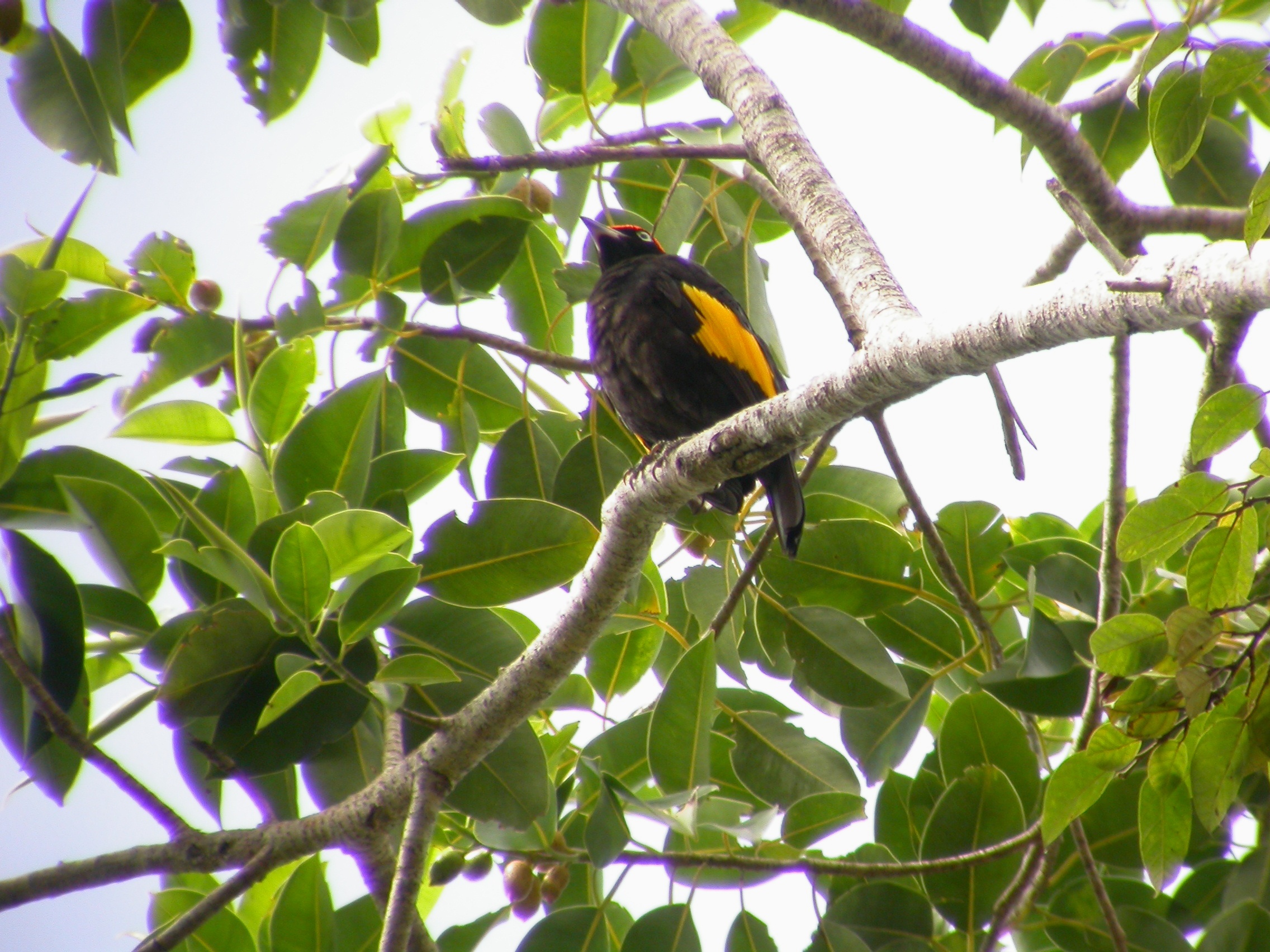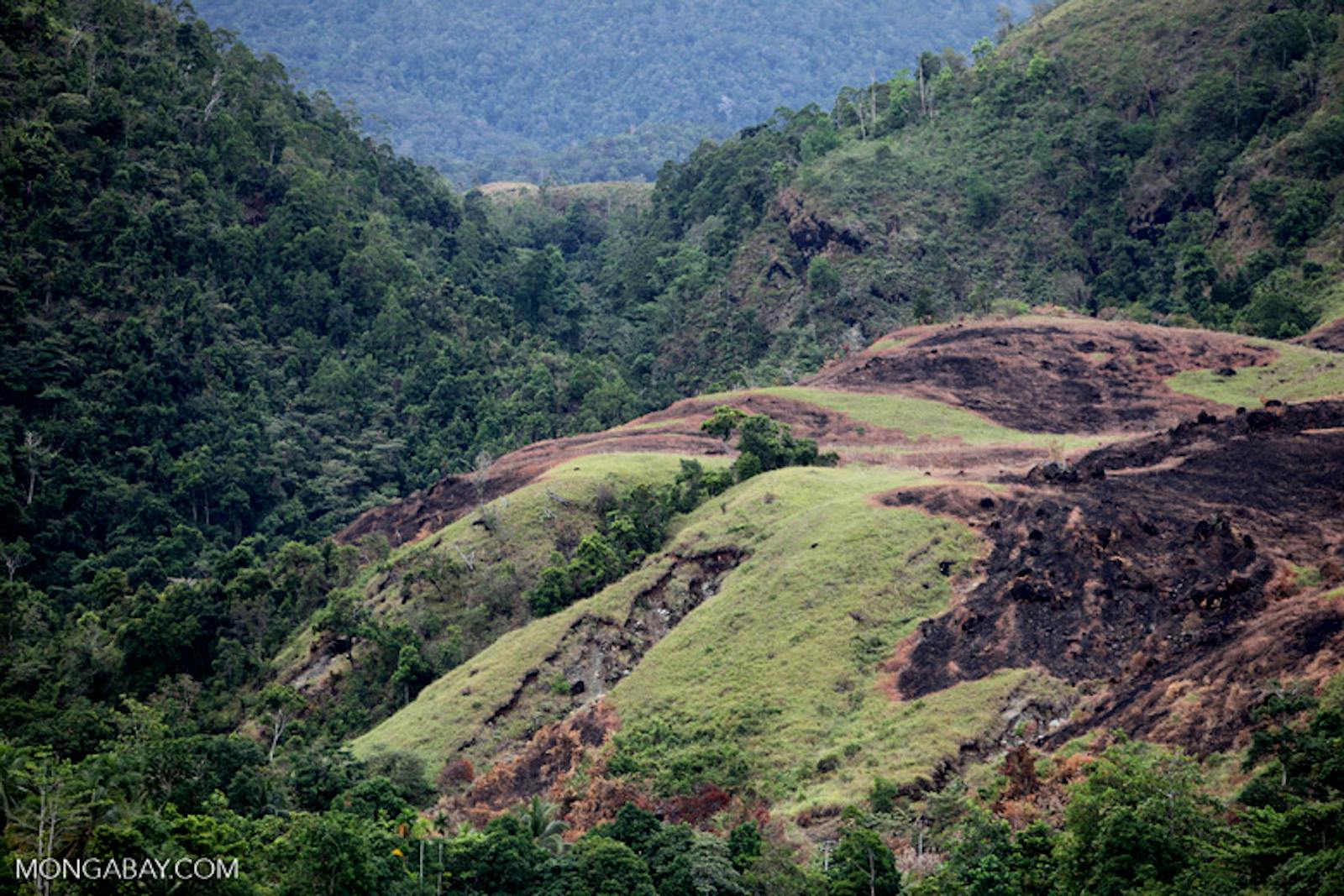Northern New Guinea Montane Rainforests
The ecoregion’s land area is provided in units of 1,000 hectares. The conservation target is the Global Safety Net (GSN1) area for the given ecoregion. The protection level indicates the percentage of the GSN goal that is currently protected on a scale of 0-10. N/A means data is not available at this time.
Bioregion: New Guinea & Surrounding Islands (AU13)
Realm: Australasia
Ecoregion Size (1000 ha):
2,334
Ecoregion ID:
149
Conservation Target:
98%
Protection Level:
1
States: Indonesia, Papua New Guinea
The isolated mountain ranges rising from the vast lowland forests of the northern New Guinea plains are home to rare and spectacular plants and animals, including Sir David’s long-beaked echidna and the fire-maned bowerbird. Possibly the world’s largest rhododendron flower—an enormous white blossom—was also recently discovered. Over geologic time, these ranges were once offshore islands that slammed into New Guinea, and the cool and wet conditions of these high mountains have helped them act as isolated refugia for many montane species despite now being long-surrounded by lowland forest rather than the sea.
This ecoregion is comprised of the Van Rees (to 1,430 meters), Gauttier (Foya) (to 2,193 meters), Cyclops (to 2,158 meters), Denake, Bewani (to 2,000 meters), Torricelli (to 1,650 meters), Prince Alexander (to 1,240 meters), and Adelbert Ranges (to 1,718 meters). The climate of the ecoregion is tropical wet, which is characteristic of this part of Melanesia, located in the western Pacific Ocean north of Australia. The northern part of New Guinea is a very active tectonic area with a complex geologic history; the geology of this mountainous ecoregion is a mixture of metamorphic and Pliocene fine-grained terrestrial and marine sediments.

The flagship species of the Northern New Guinea Montane Rainforests ecoregion is the fire-maned bowerbird. Image credit: Biopedia (CC by 2.0)
The tropical montane rain forests have diverse tree floras, including representatives of Nothofagus, Lauraceae, Cunoniaceae, Elaeocarpaceae, Lithocarpus, Castanopsis, Syzygium, Illex, and southern conifers. Nothofagus and Araucaria occur in dense stands in places. Myrtaceae, Elaeocarpaceae, and primitive conifers increase with altitude, the latter including Dacrycarpus, Podocarpus, Phyllocladus, and Papuacedrus.
The prevalence of southern gymnosperms (conifer-type trees) reflects the great age and isolation of the ecoregions biota. Limestone and ultrabasic soil vegetation occurs in some areas, supporting a distinct vegetation. The Torricelli, Bewani, and Prince Alexander ranges have a flora estimated to exceed 2,000 species. Several endemic plants have been collected in the Cyclops Mountains, but the flora of this ecoregion remains poorly known.
Although the overall species richness and endemism are relatively moderate when compared with neighboring ecoregions in the Indo-Pacific region, the montane rain forests of Northern New Guinea support some very unique fauna. Fifty-one mammal species are documented in the ecoregion, with six species endemic or near-endemic. Recent expeditions have added some new species, and much of the biota remains to be investigated by scientists.
The mammalian fauna consists of tropical Australasian marsupials, including tree kangaroos, possums, and gliders. The Cyclops long-beaked echidna (Sir David’s) was split from the Papuan echidna as a distinct species. Both are among the oddest mammals in the world and are considered endangered due to hunting. The endemic and critically endangered northern glider occurs nowhere else. The highlands of the north coastal ranges are home to Scott's tree kangaroo, among the largest and most threatened native forest mammals of New Guinea. A Cercartetus pygmy possum, one of the world’s smallest marsupials, and a Mallomys giant rat were recently discovered.
The birds of the ranges include representatives of several Australasian families, including honeyeaters and birds of paradise. There are twelve endemic or near-endemic birds, including the golden-fronted and fire-maned bowerbirds that build colorful structures to attract mates. Over 300 bird species are known from the Adelbert Range alone, including 38 bird-of-paradise species. The plants and animals of these isolated montane forests have been little investigated by scientists and are likely to support many new and unusual species.
The Foja Wildlife Reserve of West Papua, Indonesia covers some of the central section of the westernmost ranges (Van Rees). The Penunugan Cyclops Nature Reserve covers most of the Cyclops Range, though lower elevation foothills are not within the reserve, and exploitation is largely unregulated. A community-based group, LESTARI, and Universitas Cendrawasih are presently trying to implement a Cyclops Nature Reserve collaborative management master plan. The Adelbert Conservation Area is an ongoing community-based land use program managed by the Adelbert Conservation Cooperative Society (ACCS) and supported by The Nature Conservancy.
The montane forests of this ecoregion are largely intact presently. However, the conservation situation is changing with the encroachment of settlers and agriculture along logging roads, especially in the coastal Cyclops Mountains near the town of Jayapura. Charcoal production, in particular, has increased dramatically in this area, driven by an expanding population and rising demand. Logging has impacted at least 150 square kilometers of the northern Adelbert Range, although this has been slowed by community actions; in the central Adelbert ranges, agriculture expansion and settlement have altered a large portion of the lowland forests. The montane forests in this ecoregion will be impacted over time through increased hunting pressure and further encroachment for agriculture, charcoal, and timber. An influx of highlanders from remote parts of New Guinea into Jayapura is adding to pressures for forest resources.
Priority conservation actions for the next decade
- Implement policies that prohibit logging in foothill and montane forests and effectively manage charcoal exploitation in heavily impacted areas, such as the Cyclops Range.
- Establish long-term community-based engagement and management programs for the Adelbert and Cyclops Ranges, where settlement and encroachment are greatest, to achieve participatory land use planning and local management of natural resources and to reduce hunting of threatened species, such as echidnas and tree kangaroos, in priority population areas.
- Identify hotspots of encroachment and agricultural expansion in all the ranges to guide targeted conservation projects to limit uphill impacts.
-
-
- Adams VM, VI Tulloch, HP Possingham. 2017. Land-sea conservation assessment for Papua New Guinea. A report on the work undertaken to fulfil the terms of the project Review and Integration of the Terrestrial and Marine Program of Works on Protected Areas. PNG CEPA, University of Queensland, Global Environment Facility, UNDP, Brisbane. 75 pp.
- Beehler BM, TK Pratt. 2016. Birds of New Guinea Distribution, Taxonomy, and Systematics. Princeton University Press, Princeton.
- Davis SD, VH Heywood, AC Hamilton (eds). 1994-1997. Centres of plant diversity: a guide and strategy for their conservation. World Wide Fund for Nature (WWF) and ICUN - World Conservation Union, Cambridge.
-
Cite this page: Northern New Guinea Montane Rainforests. Ecoregion Snapshots: Descriptive Abstracts of the Terrestrial Ecoregions of the World, 2021. Developed by One Earth and RESOLVE. https://www.oneearth.org/ecoregions/northern-new-guinea-montane-rainforests/
-



